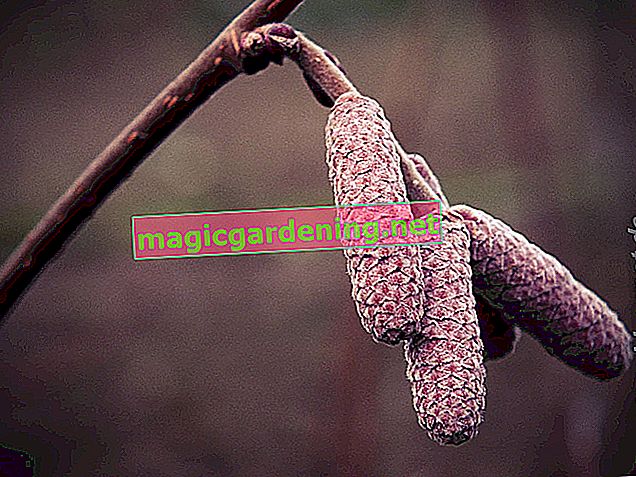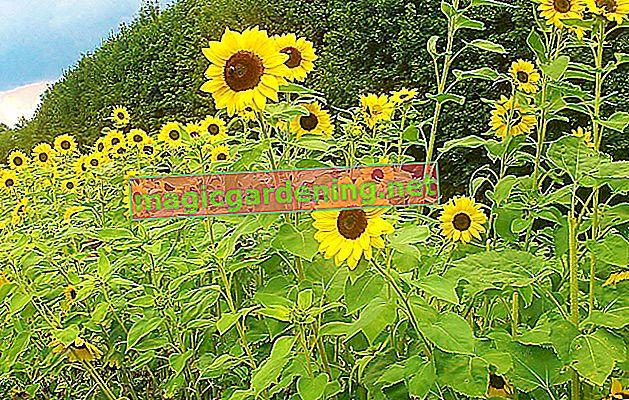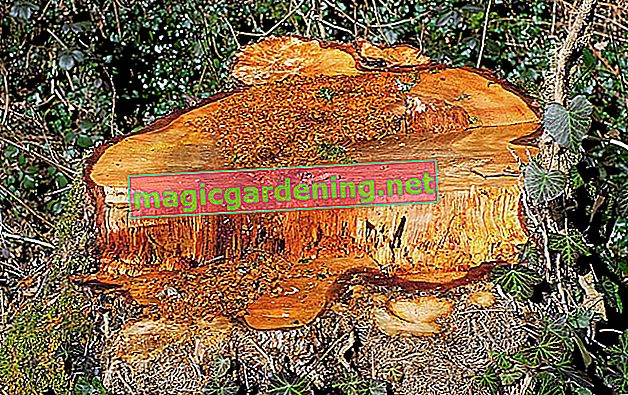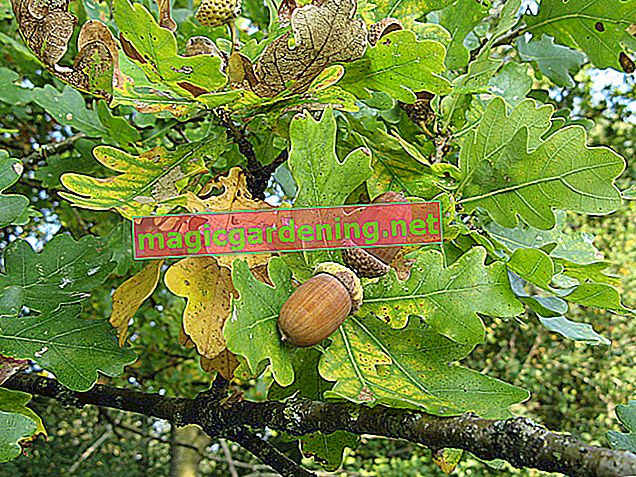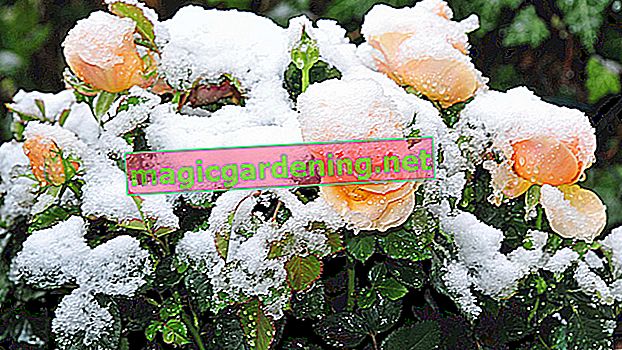
Care tips
In order to enjoy the autumn magic of a beard flower, the following care measures are required:
- Water the ornamental wood moderately when the soil is dry
- Organically fertilize with compost and horn shavings (€ 6.39 at Amazon *) or with liquid rose fertilizer (€ 11.41 at Amazon *) in the pot
- Clean up withered flowers for a neat appearance
- Cut back to 15 cm in early spring
also read
- Beard flower - non-poisonous ornamental shrubs for the autumn garden
- Proper care for the beard flower
- Cut back the beard flower - for a splendid bloom
A thick layer of leaves or compost in winter aims to protect the root ball from frost and moisture. In the bucket, the bearded flower moves to frost-free, not too dark winter quarters.
Continue reading
Which location is suitable?
The bearded flower would like to flirt with the sun all day. The sunnier and warmer the location, the more splendid the flowers, surrounded by a seductive scent. The ideal location is completed by a humus rich, sandy-loamy soil that should not be too moist.
Continue reading
The correct planting distance
Arrange the ornamental trees with 3 to 4 specimens per running meter. In order to plant a larger area with beard flowers, we recommend a density of 4-6 plants per square meter. The lower the expected final height and width, the shorter the distance to the neighboring bed.
What soil does the plant need?
The bearded flower feels in good hands in loose, humus-rich and well-drained soil. The top priority for vital growth and abundant flowering is soil without waterlogging. The flowering wood copes much better with dry soil in the gravel bed, on the roof garden or in the heather garden than with permanently moist substrate near water.
What is the best time to plant?
Planting time for young plants in the container is during the entire growing season. If you put bearded flowers in the ground between mid-May and mid-September, neither late ground frost nor an early onset of winter can damage the ornamental wood. Planting should, however, be avoided during hot summer periods.
When is the flowering time?
The bearded flower delights us with its splendor of flowers when numerous flowers and perennials are already preparing for winter. If you want lush colors from August to October, then this ornamental wood is a perfect choice. If you clean off dead flowers as soon as possible, a re-flowering will follow.
Cut the beard flower correctly
A courageous pruning is rewarded with an opulent flowering of flowers and bushy, compact branches. Since the ornamental wood only blooms on this year's wood, you should not be squeamish when using the secateurs. When the frost recedes in early spring, the best time has come to cut beard flowers. How to do it right:
- Cut all healthy shoots back to 15 cm
- Cut dead wood and frozen branches at the base
If you cut off withered flowers regularly in late summer, the flowering period extends until the first frost. The last shoot remains on the shrub until February as additional winter protection.
Continue reading
Water beard flower
The beard flower favors an alternating moist substrate with intermittent drying periods. Only water the ornamental shrub when the surface of the soil has dried well. Experience has shown that watering in a bucket is more frequent than in a bed. It is an advantage if the water is poured directly onto the roots, as overhead irrigation affects the beauty of the flowers.
Fertilize beard flower properly
The nutritional requirements of a beard flower are at a low level. In spring, after pruning, fertilize with compost and horn shavings as a starter fertilizer. If you repeat this process every month until the end of the flowering period, the ornamental wood will be satisfied. In the tightly limited substrate volume of the bucket, the energy reserves are used up faster. Fertilize in pot culture every 2 weeks with liquid rose fertilizer in a diluted concentration.
Overwinter
Since the beard flower only tolerates frost up to - 15 degrees for a short time, the plant usually freezes back to the point of lignification or even close to the ground. Since the flowering wood is cut back vigorously in early spring anyway and sprouts vital again, this property does not require any special precautions. However, winter protection is advisable so that the root area is not affected. How to do it right:
- Do not cut off the beard flower in the bed before winter
- Pile up the tree slice thickly with leaf soil, brushwood or peat dust
Cultivated in the bucket, the frost-sensitive ornamental wood moves into a cool winter quarter in good time. At temperatures between 0 and 5 degrees Celsius, only water enough so that the root ball does not dry out. The beard flower is not fertilized in this phase.
Propagate beard flower
The beard flower proves to be a little tricky with regard to reproduction. Even single-variety breeding using cuttings takes 2 to 3 years. Half lignified shoot tips are cut in June / July with a length of 10-15 cm. Defoliated in the lower part, put each offshoot in a small pot with poor substrate and water regularly. At 16 to 18 degrees Celsius on the partially shaded windowsill, repot the young beard flowers repeatedly until they are ripe for planting in the bed.
If you breed new specimens by sowing seeds, it will take an even longer time until the first flower. Sown behind glass and cared for at a constant 18 to 20 degrees Celsius, after germination at 15 to 17 degrees, it takes 5 years of patience before the beard flower is capable of blooming.
Continue reading
Beard flower in the pot
On the sunny balcony, the bearded flower in the pot sets autumnal accents if it is given a high-quality, structurally stable potted plant substrate. A drainage from potsherds prevents damaging waterlogging at the bottom of the pot. Check the soil every 2-3 days with a thumb test in order to water in dry conditions. We recommend a liquid rose fertilizer for the nutrient supply. Clean withered flowers regularly so that the beard flower always catches the eye as if peeled from an egg. In good time before the first frost, cut the shoots back to 15 cm and move the potted plants into the frost-free, light winter quarters.
Nice varieties
- Blauer Sparrow: Compact growing variety that impresses with dark blue flowers in late summer; Growth height 60-70 cm
- Heavenly Blue: Primus among the beard flowers thanks to its bright blue flowers and proud stature; Height 80-100 cm
- Summer sorbet: light blue flowers are decoratively highlighted by yellow-edged leaves; Growth height 70-80 cm
- Symphony in Blue: This strain does what the name promises. Beautiful rose companion; Height 50-80 cm
- Arthur Simmons: premium variety with dark lavender blue flowers and silvery branches; Height 80-120 cm

